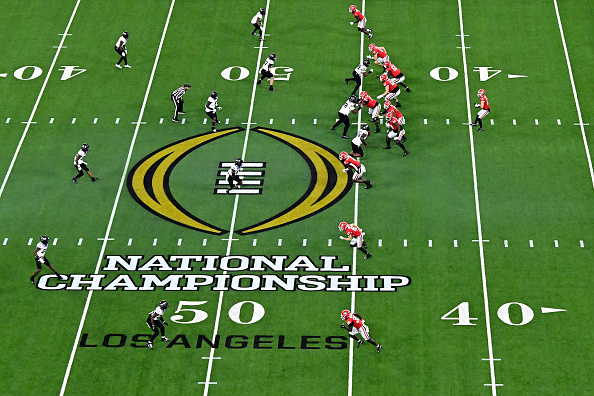Beth Sullivan | May 18th, 2019
In the past week, the news has been awash with reports of players being suspended or kicked out of their league. Patrick Peterson who plays for the Arizona Cardinals in the NFL was given a six-game suspension. Tyreke Evans who played for the Indiana Pacers was disqualified and suspended NBA for two years for testing positive for “drugs of abuse”. Geir Helgemo was suspended until November by the World Bridge Federation – the card game for violating their anti-doping rules.
Performance Enhancing Drugs (PEDs) use is screened for by all of the major professional and amateur sports leagues and institutions. Each entity sets its own rules and regulations and these are agreed upon when collective bargaining agreements are ratified with the professional leagues when an institution or governing body decides to compete in a particular discipline or when an athlete decides to pursue competing in events such as the Olympics and Paralympics.
Policies currently in place vary depending on the league involved. Here are links to the policies that have been made public.
Major League Baseball (MLB)
National Football League (NFL)
National Basketball Association (NBA)- Current policy is buried starting on page 421 (page 443 of linked pdf) of their current CBA which went into effect July1, 2017.
World Anti-doping Agency – (WADA) Used by both the NHL and the MLS. Players are referred to guidelines detailed on WADA resource for details in their CBA with leagues.
Olympics and Paralympics (USOC)
National Collegiate Athletic Association (NCAA)
What are Performance Enhancing Drugs?
Frequently fans of any major sport hear the term Performance Enhancing Drugs bandied about. Before discussing the different categories, a general definition would probably be helpful. Most people assume performance-enhancing drugs are the same thing as illegal drugs sold in dark alleys and other unsavory places. While these are covered by the policy there is a lot more than just that involved in these policies. According to the Merriam Webster Dictionary – a substance (such as an anabolic steroid, human growth hormone, or erythropoietin) that is used illicitly to improve athletic performance. Sounds simple enough, Right? WRONG!!!! Policies on what is and isn’t a performance-enhancing drug or procedure keep lots of people up late and drive officials, coaches and players crazy. There have even been Congressional Hearings on the subject.
Current Specific Categories
- Anabolic Steroids – Are used by athletes to increase their muscle mass and strength. The main anabolic steroid hormone produced by your body is testosterone. Most anabolic steroids are derived from testosterone. While testosterone does have medical uses, increasing athletic performance is not one of them. Steroids use can have serious effects on a body including adrenal insufficiency and psychiatric violent outbursts.
- Designer Steroids – In an attempt to get around drug tests and laws, designer steroids have seen a major uptick in use. Designer steroids are chemically modified steroids, that provide the same body effects to athletes but have been illicitly created to be undetectable by current drug tests. They are made specifically for athletes and have no approved medical use. They are also not tested or approved by the FDA since they have no medicinal use.
Anabolic steroids taken by athletes for athletic prowess are taken at much higher doses than would be used in normal medical prescriptions. As a result, the risks are also greater. Men who use steroids may develop more prominent breasts, infertility, prostate gland enlargement, and shrunken testicles. A woman may experience an irreversible deeper voice, an irreversible enlarged clitoris, modification or cessation of menstrual cycles which can lead to increased risk of ovarian cancer, a modification in body hair either more or less. Yes, a woman can go bald from using steroids. Athletes of both sexes have experienced hepatic tumors, liver abnormalities, increased blood pressure, severe acne, increased risk of tendon ruptures and slower healing of ruptures, increased levels of low-density lipoprotein (LDL) – BAD cholesterol, decreased levels of high-density lipoprotein (HDL) – GOOD cholesterol, heart and blood circulation problems including early myocardial infarctions and strokes, aggressive behaviors, depression, drug dependence, and infections associated with other injected drugs like HIV and Hepatitis.
- Human Growth Hormone (HGH) is used medically to treat children who have growth hormone deficiency related to several genetic and pituitary conditions. It is a controlled medication which is only available as an injection. HGH has been touted as a “fountain of youth” because it supposedly helps the body to heal faster and slow down the effects of aging. Athletes use it to improve the integrity of muscle mass and performance. It is not currently permitted to be prescribed for these purposes in the US, however, HGH is fast becoming a major player in dark web illicit drug transactions and in the illegal drug trade on the street.
Adverse effects associated with human growth hormone use range in severity based on the dose used and length of use. Adverse effects include muscle weakness, persistent joint pain, neuropathic issues including carpal tunnel syndrome, ulnar neuritis, neck stingers, and torticollis (stiff neck). Problems with glucose regulation and full-blown diabetes have also been linked to HGH misuse. Cardiovascular issues like cardiomegaly (enlarged heart) and hypertension are also seen.
- Erythropoietin is a hormone used to treat anemia in people with end-stage kidney disease. It increases the production of red blood cells and hemoglobin — the protein in red blood cells that carries oxygen to your body’s organs. Having more red blood cells allows the movement of oxygen to the muscles to be sped up which decreases muscle fatigue and damage. It was used commonly by cyclists in the late 80’s and 90’s. Its use was banned in the early ’90s, however a test to detect it wasn’t made available until the Summer Olympics in 2000.
- Diuretics change the bodies fluid and electrolytes balance and leads to the increased production of urine which leads to reduced weight. They are also used to dilute urine and thereby other substances like other illegal drugs. While most people consider diuretics to be benign with little risk, this is not the case. Diuretics taken at any dose, even medically recommended doses, can lead to adverse effects in both athletes and others prescribed this type of medication by their doctor. The adverse effects include dehydration, dizziness, increased sodium levels, decreased potassium levels, low blood pressure, and even death.
- Stimulants– help to prolong endurance, increase heart rate and decrease appetite. The most common stimulant is caffeine. Stimulants are found in over the counter cold medicine, ADHD medications and are also illicit substances like cocaine and methamphetamine. With the exception of caffeine, they are all banned by the major sports leagues. Because of their use in many OTC cold preparations, they are the most common substance identified in a positive drug screen.
Substance abuse and misuse has been around since ancient times. Technology is constantly being developed to try to combat misuse. I suspect it will continue to be a back and forth battle between the users and suppliers and those who are tasked with scientifically identifying who has used and what they used to try and get a competitive advantage.
Questions and comments?
thescorecrowsports@gmail.com
Follow Us on Twitter @thescorecrow
Follow Us on Reddit at u/TheScorecrow
Follow Us on Facebook at The Scorecrow
Follow Us on Instagram at The Scorecrow
Follow Beth Sullivan on Twitter @GAPeachPolymer
Main Image Credit:
[getty src=”1081212562″ width=”594″ height=”396″ tld=”com”]







